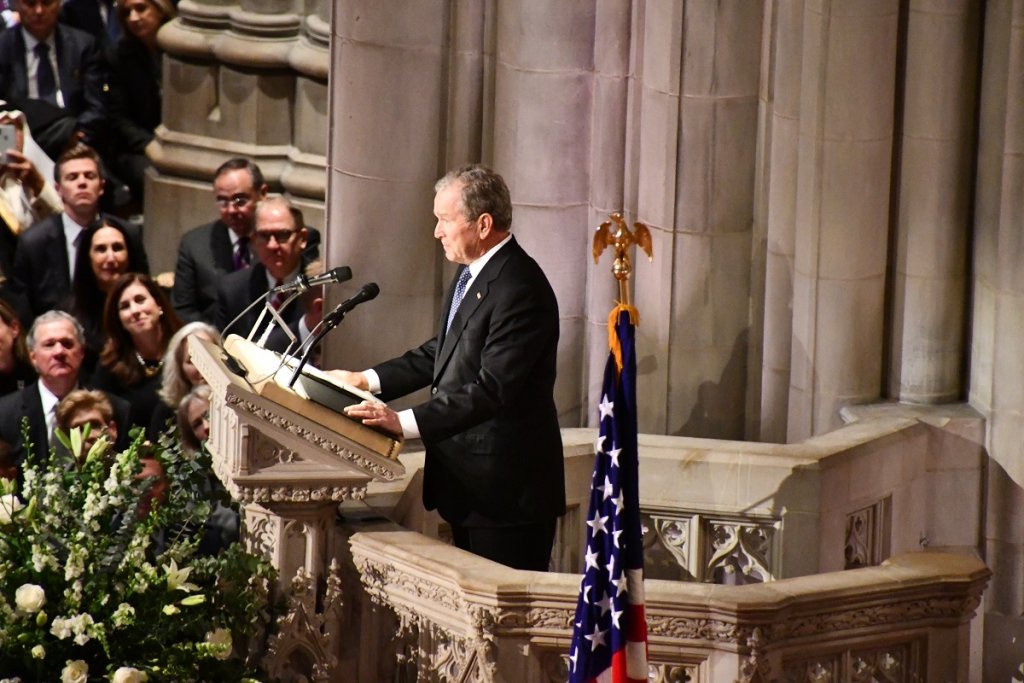A eulogy is a final goodbye to a close friend or relative often given at the wake, funeral home, or funeral reception. The tribute should be structured so it weaves details about who the deceased person was into his or her biography. Here are some eulogy templates and examples that show you how it’s done.
Writing a eulogy speech for a loved one can be emotional and difficult. Fortunately, you don’t have to start from scratch. While you can be creative and share whatever special memories you want, following a structure can make the process easier if you’re having a difficult time. Eulogies vary in length but generally should be between 3 and 10 minutes.

Table of Contents
How Do You Structure A Eulogy?
A well-organized eulogy will take listeners on a journey and celebration of life. Like any good story, a eulogy should have three distinct parts:
- Beginning
- Middle
- End
Beginning – Briefly describe the person’s essence, such as a mother who loved her children, a family man who always put his children first, a highly respected scholar, or a deeply religious woman.
Middle – Several paragraphs may be included in the middle that describe the deceased person. There are many ways to tell the story of someone’s life, from chronological order to theme-based.
End – End your memorial by reiterating the key points of the deceased’s life and emphasizing how they touched others and will be remembered.
What Topics Should You Cover In A Eulogy?
There are many topics you can potentially talk about in your eulogy speech, including:
Beginning:
- Persona or essence of the deceased
- Other names or nicknames they went by
- Your relationship with them
- Song lyric, scripture, or poem to set the tone
Middle:
- Life accomplishments
- Key life events, like graduations or a wedding anniversary
- Special memories and short stories
- What made them such a special person to so many people
- Early life and childhood years
- Marriage, children, and surviving family
- Activities you enjoyed together
- Your favorite thing about them
- Personality traits or quirky and endearing things they did
End:
- A final thought that ties into your theme
- Your wishes for how family and friends should remember the person
- The lyric of a song, a quote, or a scripture
- Thank friends and family for attending the memorial service

What Are The 6 Steps To Writing A Eulogy?
Because you will be emotional, it helps to follow a writing process. Consider going through these steps:
Step 1 – Research
Research details about the deceased person’s life, including their birth date, hometown and places they’ve lived, spouse, children, and other family, their career, notable accomplishments, what schools they attended, hobbies, volunteer work, or other roles in the community. Write down a timeline starting with birth and ending with death.
If you will be speaking on behalf of other friends and family members, ask for special memories, short stories, characteristics, or anything else they want to highlight.
Step 2 – Review Research
Look for a common theme or pattern in the research you did. This will help determine if you should deliver your eulogy in chronological order or theme-based.
Use index cards or separate sheets of paper to create a timeline of events and stories. Pick one or two short stories from each season of life.
Step 3 – Write a Draft
Using your notes, start writing. Write in the same way that you speak so that the delivery will sound natural. It’s ok to use tasteful humor, especially if the deceased was known for using humor in their lives.
If you’re having a difficult time, ask a friend or family member for help. Professional eulogy writers also exist if you’re willing to hire someone.
Step 4 – Get Feedback
Ask others for feedback on your eulogy. Often, a family member might think of something you overlooked, or they might point out that the tone might not be a match for the deceased’s personality.
Step 5 – Edit & Revise
If you have the time, sit on your eulogy speech for a couple days and come back to it. Emotions can make it difficult to think clearly, and you may decide to change something. Incorporate any feedback from friends and family that you want to accept, and create a final version on paper or index cards.
Step 6 – Practice Your Speech
Practice delivering your eulogy in front of a mirror or for friends or family if you’re comfortable. You can also record yourself on your phone or computer.
Remember that you will likely get emotional and choked up – that’s expected. Don’t strive for perfection; deliver your speech from your heart and take note of places where you get emotional.
If you are looking for examples of the best eulogy speeches to give you an idea or even some pointers on how to write a eulogy, just check online.

What Are The Five Things That You Should Never Do In A Eulogy?
A eulogy should be a celebration of life. Of course, everyone in attendance is sad and mourning the loss of a loved one, but a eulogy should shine a light on all of the positive aspects of the deceased’s earthly life.
That being said, there are certain things you should never do in a eulogy:
DON’T bring up family disagreements, grudges, crimes, bad memories, or negative feelings. If your loved one spent 20 years in jail, you might mention if it leads to an encouraging story about he turned his life around, but don’t dwell on it..
DON’T use inappropriate humor or tell embarrassing stories about the deceased. If the deceased had a raunchy side, save those stories for a drunken get-together with close mutual friends.
DON’T focus on the cause of death or relive the painful final days of the deceased. If the person died of cancer, say that without all the gory details.
DON’T write a boring eulogy. Avoid delivering a chronological laundry list of the deceased person’s life events. Choose memories carefully and strive to shine as the storyteller in your loved one’s last great appearance.
DON’T use the eulogy for political purposes. The eulogy at Aretha Franklin’s funeral went off the rails into a discussion of black-on-black crime, much to the anger of her family, who felt she and what she did in her amazing life were shortchanged.
DON’T embarrass yourself. It’s natural to get emotional and need to pause to take a drink of water or blow your nose. But remember to breathe, don’t rush your speech, don’t use a lot of ums and ahs (that’s why you practiced!), and certainly don’t display any bad habits. On the other hand, DO express emotion in your speech; don’t speak in monotone in an effort to suppress emotion.
How Can A Eulogy Template Help You?
A eulogy template can give you a basic eulogy outline to follow when writing your speech. This can be especially helpful if you are having a difficult time. A template can also be helpful if you’ve been asked to give the eulogy, but you didn’t know the deceased very well, or if you had a strained relationship with them.
Editable, fill-in-the-blank type eulogy templates can be used straightforwardly or simply as a guide. However, you use it, remember that the best eulogy is born from the details — the stories, memories, and the love you share in your funeral speech.
Eulogy Speech Example & Template
Below is a sample eulogy you can use to make your own.
Hello, my name is _____________. Thank you for being here today to celebrate the life of ______________. I am ______________’s _____________. He/she was (i.e., loving wife and mother)______, and it is my honor to be here today to remember her.
_____________ was born on _____________ and left his/her Earthly body on ______________.
_____________ is the son/daughter of ____________ and ________________. He/she grew up in ___________________. (He/she) had ___ siblings: ______________. ____________ had many wonderful memories in his/her early life, such as the time ___________________________________________________________________________________________.
At age ___, (he/she) attended ___(college etc)_______________ and graduated with ______________ in _____. His/her career in ______________ spanned many years, where he/she worked at ______________ and ______________.
In ______, _________________ met ______________ and got married in _____. They were married for ____ wonderful years.
If I only had three words to describe ______________, they would be: ______________, ______________, and ______________. He/she lived life ______________, and wasn’t afraid to ______________. Some of ________________’s favorite activities were ________________________________ _______________________________________________. ______________ was also one of his/her greatest joys in life.
______________ had many achievements to be proud of in his/her life, such as ________________________ ________________________________________________________________________________________
I have many fond memories of _________________, and not nearly enough time to relive them all with you today. But a few special memories stand out that will forever hold a place in my heart. There was one time, ___________ __________________________________________________________________________________________________________________________________________________________________________________________________. And back in _____________________________________________________________________________________ _________________________________________________________________________________________________. But my most treasured memory is________________________________________________________________ ______________________________________________________________________________________________.
I would like to share a poem/quote/verse that reflects _____________’s life and what she meant to me: _________________________________________________________________ ________________________________________________________________________________________.
Thank you again to everyone who came out today to celebrate ______________’s life, memorialize him/her, and say goodbye. I would also like to extend a special thank you to ____________________________ for ____________________________________________.
Finally, I say goodbye to _____________________. Your memory will live on forever in the lives you touched. May you rest in peace.

